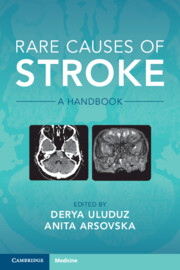Background: Cerebral venous thrombosis is a rare cause of stroke, with a number of well-defined risk factors. However, there exist few studies that describe trends in the prognosis of this disease over time. Methods: A retrospective study was performed on patients diagnosed with cerebral venous thrombosis at the University of Alberta Hospital during two time periods: 1988-1998 (21 patients) and 1999-2009 (40 patients). Signs and symptoms, risk factors, imaging findings, etiologies, treatment modalities, and status at discharge were examined. Results: Headache, nausea and vomiting, focal motor deficit, and seizure were the most common signs and symptoms, and active hormonal contraception was the most commonly identified risk factor between the two cohorts. Hematoma and hyperdense sinuses were the most commonly identified CT findings between groups. Thrombophilia and the use of hormonal contraception were the most frequently identified etiologies between the two cohorts. Treatment was similar, with the majority of patients in both cohorts receiving unfractionated heparin as first-line therapy. Patients in the 1999-2009 cohort were significantly less likely to have a severe deficit or be dead at discharge (odds ratio [OR]=0.178; 95% confidence interval [CI95%]=0.051, 0.625) and were more likely to have a favorable modified Rankin Scale score of 0 or 1 at discharge (OR=7.98; CI95%=1.79, 35.71). Conclusions: Our data indicate a reduction in severe residual symptoms at discharge and improved functional status at discharge for patients presenting with cerebral venous thrombosis from 1999 to 2009, as compared with 1988-1998.


